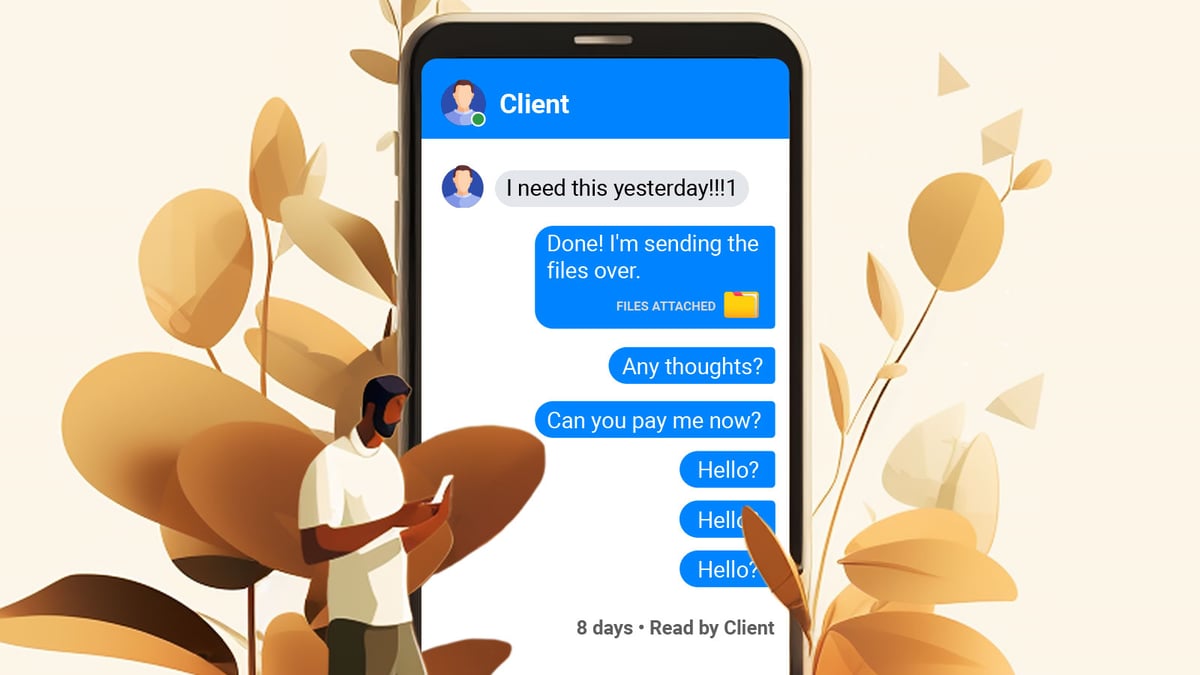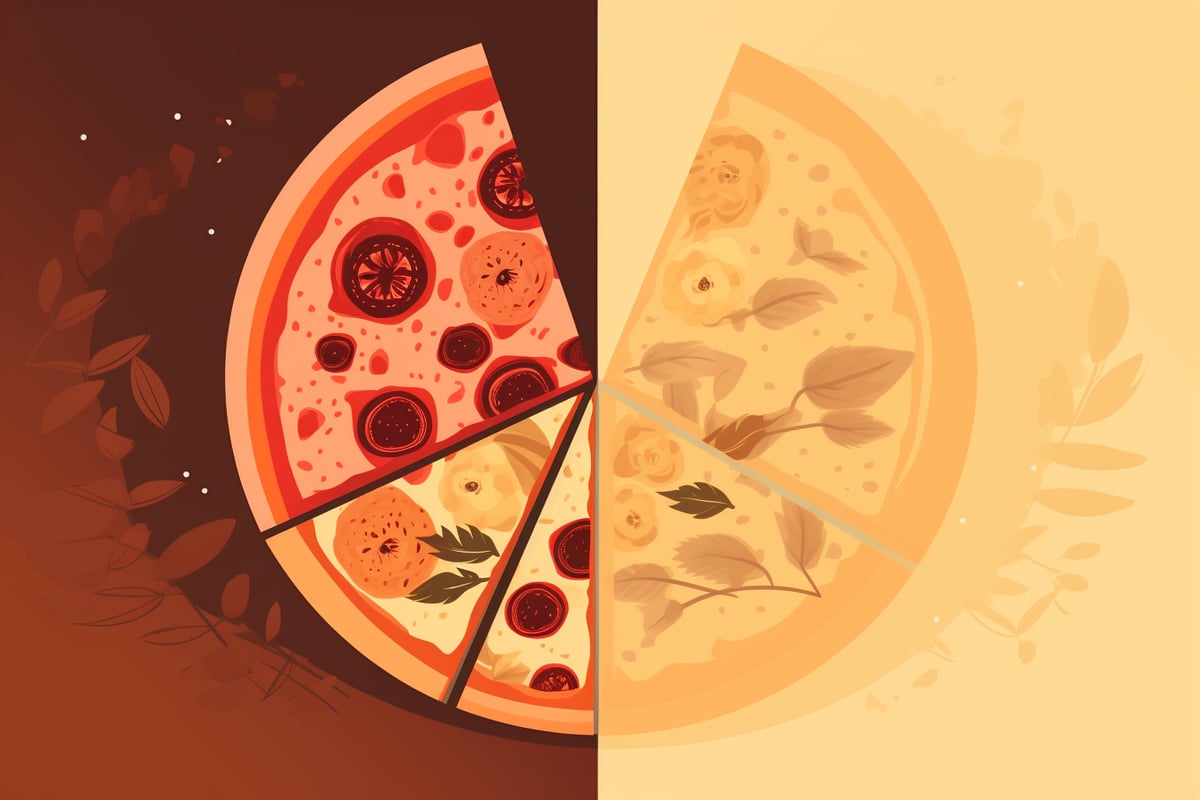Have we not all been there? We are enthusiastic newcomers to the creative industry who are keen to jump right into fascinating projects without requesting a deposit. We trust our clients, believing they'll be fair and honest, paying us once our creative magic has transformed their vision into reality. It works, or at least it did, until reality smacked us in the face.
Picture this: I was there too, in the early days. I said "yes" to a project, invested countless hours, only to be left high and dry - unpaid, frustrated, with project files in limbo, and the client vanishing into thin air. To add salt to the wound, I had to turn down other lucrative opportunities to work on this project. That was my wake-up call, the moment I pledged to always secure a down payment before lifting a creative finger.
Now, I'm not penning this for the newbies; they'll likely get singed sooner or later and learn their lesson. No, this one is for the seasoned pros, those who've been scorched but still harbor that lingering fear of demanding a down payment.
💸💸💸

The Down Payment Dilemma
Trust or Fear: What Holds Us Back?
Trust: At our core, we creatives are naturally trustworthy people. We have faith in our customers and count on them to keep their word when the job is finished. Although it is a noble sentiment, it can disastrously backfire.
Fear of Losing the Client: Then there's that nagging fear. What if we ask for a down payment, and the client walks away, seeking a more lenient creative soul? We don't want payment structure to be the deal-breaker, so we often remain silent on the subject, accepting the risks.
The Perils of Working without a Deposit
Let's get real about what can happen when you embark on a project without a deposit cushion.
- Unpaid Hours: Your time is valuable, and without an upfront payment, you risk working for free, a grim prospect.
- Vanishing Act: Clients can disappear into the digital abyss, leaving you stranded with unfinished projects and unmet payments.
- Opportunity Cost: Every project you take on requires an investment of your time and resources. Without a down payment, you're missing out on other potential gigs.

Crafting the Perfect Payment Structure
Let's get our hands dirty and explore the complex world of payment arrangements. Your capacity to maintain financial security depends on this crucial part of your freelancing employment. There are many models to pick from, and each has a unique mix of benefits and dangers. So let's examine these payment methods in more detail, examining their subtleties and illuminating when and how to use them successfully.
💵The 50/50 Split: Striking a Delicate Balance
Pros: Although navigating this payment mechanism requires skill, it can be quite lucrative. It is comparable to walking a tightrope. The risk of working for free is greatly reduced when you receive 50% of the remuneration in ahead. It's a reasonable compromise because you start working with a client who has made a concrete commitment.
Cons: However, there's a catch - you're not entirely risk-free. If the client decides to back out halfway through the project, you'll be left with an unfinished endeavor and only half of your compensation. It's a scenario that can leave you feeling somewhat exposed, especially on more extensive projects.

💵The 50/25/25 Method: Milestones for Financial Security
Pros: Here, we introduce a more structured approach to payments. You start with a 50% upfront deposit, as a safeguard against unpaid efforts. Then, at specified milestones or critical stages of the project, you receive an additional 25% of the total payment. Finally, the last 25% is due upon the successful completion of the project. This method ensures that you're not left entirely high and dry at any point in the project's timeline.
Cons: Despite this, there is still some risk, especially if the client decides to cancel the project after the first milestone. In such circumstances, you'll only receive half of the agreed-upon money, which could not be sufficient to compensate you for the value of the labor you've already put in.

💵The 100% Upfront: A Fortress of Financial Security
Pros: For those who seek the utmost financial security, the 100% upfront payment structure is your fortress. With this approach, you receive the entire payment before you even commence work. This method virtually eliminates the risk of unpaid efforts and provides you with the confidence that you're being fairly compensated for your skills and time.
Cons: Yet, there's a caveat. Some clients might be apprehensive about parting with the entire payment upfront, particularly for sizable projects. It can be a hard sell, and you might need to reassure your client of your trustworthiness and commitment to delivering exceptional results.

How to Implement Your Payment Structure
Crafting the right payment structure can be a challenge, but it's essential for a fruitful freelance journey. Here's a roadmap:
1. Demand a Deposit Upfront
Begin by insisting on a deposit upfront. You're not a bank, and working without a deposit essentially means you're loaning your client money. Typically, a 50% deposit of the total project cost is a safe starting point. However, tailor it to suit the project's complexity.
2. Create a Payment Schedule
Establish a clear payment schedule for the remaining balance. You can tie payments to significant project milestones, spread them evenly over the project's duration, or request a lump sum at completion. Many opt for milestone-based payments to maintain steady cash flow and mitigate risks.

Handling Resistance
What if a client pushes back on your payment structure?
"We have a net 30 policy." You can navigate this by suggesting that if they submit the invoice promptly, you'll be ready to start in 30 days. Often, the deposit magically appears sooner.
"We only pay for work once it's done." Hold your ground in this situation. Give your non-negotiable position and, if necessary, investigate different dispersal strategies.
Always keep in mind that it's not only about the money; it's also about establishing clear expectations and developing enduring client connections. In order to ensure both financial stability and client happiness, your payment strategy should be in line with the dynamics of your project.
In a world where creative minds are in high demand, protect your craft and your livelihood. Demand that down payment and embark on your creative journey with confidence.
Here is my YouTube Channel with videos on similar topics:
👉 https://www.youtube.com/ChrisEllinas
_
My other links:
🔥Website: www.chrisellinas.com
🔗Social: www.chrisellinas.com/links
🎧Podcast: www.christosellinas.com/podcast


